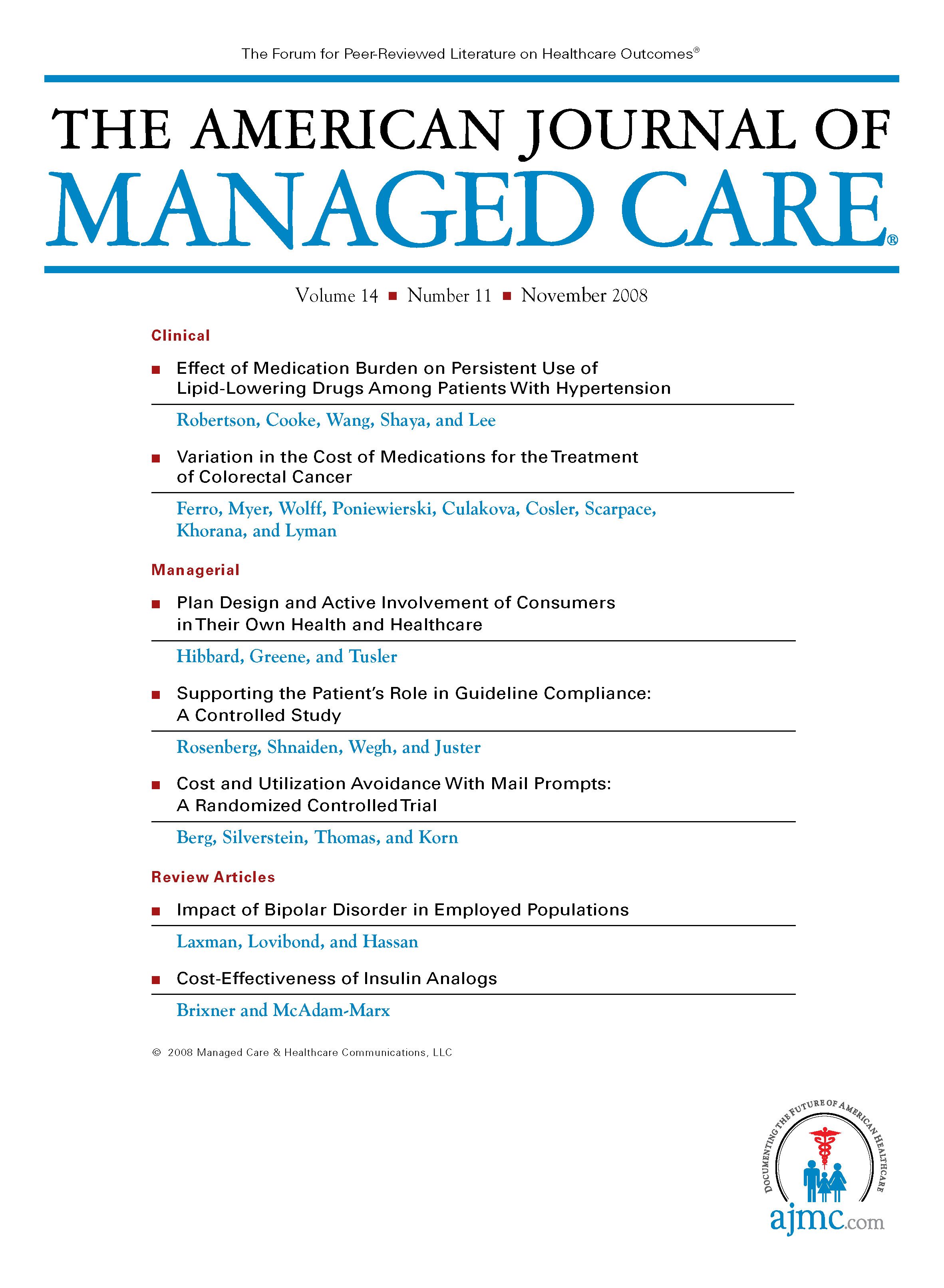- Center on Health Equity & Access
- Clinical
- Health Care Cost
- Health Care Delivery
- Insurance
- Policy
- Technology
- Value-Based Care
Return on Investment for Bariatric Surgery
TO THE EDITORS
:
In the September 2008 issue of the Journal, Dr. Finkelstein and Dr. Brown wrote an editorial1 in response to our study on the return on investment (ROI) to bariatric surgery.2 We thank Drs. Finkelstein and Brown for their thoughtful comments and outline below our responses to their critiques.
First, and perhaps most importantly, we agree with Drs. Finkelstein and Brown that, in an ideal setting, the decision to cover bariatric surgery should be based on the health benefits associated with the surgery rather than the speed of cost recovery. As they correctly point out, the standard we apply to bariatric surgery (full ROI) is not applied to heart disease, cancer, or diabetes treatments. Instead, the costs of treatment, whether pharmacologic or surgical, are evaluated against the benefits to patients. Our stricter standard does not consider benefits to the patients in calculating the ROI; instead, we focused exclusively on the economic return to the payer. The reality is that such ROI calculations are employed by third-party payers to determine coverage, and that pointing out the positive ROI might help focus third-party payers on the clinical benefits of the intervention, which Drs. Finkelstein and Brown correctly point to as the appropriate standard to apply in coverage decisions.
The editorial raises 3 methodological critiques. First, it questions the robustness of our findings because of limited long-term postoperative data, especially for laparoscopic patients. Second, the editorial observed that the cost savings could be the result of the worsening health of the control group rather than the improved health of the surgery patients. Finally, the editorial argues that a few patients with catastrophic outcomes could overturn our results.
We are fully confident that the results reported in our study are robust. We have tested the robustness of our findings by estimating alternative forms of models, including a 2-part model, alternative controls for comorbidities, additional and alternative time-related controls, alternative statistical corrections for standard errors, and multivariate analyses that omit matching but control for all 18 comorbidities and baseline costs directly in the model. All these robustness analyses yield results that fall within the range of ROIs reported in our analysis. In addition, since the publication of our article, we have received a significant update to our claims database, resulting in an additional 1200 surgery patients and an additional year (2006) of study data. This extends our postoperative data to 2.5 years for laparoscopic procedures and 7 years for open procedures. The resulting ROI was 29 months for laparoscopic surgery and 44 months for open surgery, well within the range of values reported in our paper. Based on these supplementary analyses, we believe that our results are robust.
Our data were limited to a few years even though patients may live 30 years postsurgery. Therefore, our study did not address the long-run uncertainty (beyond 7 years) of surgery cost savings. Of course, this is equally true for the control population. As was pointed out by Drs. Finkelstein and Brown, the morbidly obese control population is getting sicker and more expensive to treat relative to the surgery population as time elapses. These trends are likely to endure beyond the observed period as well.
Drs. Finkelstein and Brown comment that cost savings result from an increase in costs among the control group rather than a cost decrease among surgery patients. Although part of the cost gap between the surgery group and the control group resulted from increased costs for nonsurgery patients, costs for surgery patients do fall relative to presurgery costs. This finding demonstrates that bariatric surgery improves patient conditions and lowers costs both relative to presurgery conditions and to the morbidly obese control population.
Finally, we do not believe that a few patients with catastrophic outcomes could overturn the results. Our analysis included all medical costs, including any costs associated with complications or catastrophic outcomes on both sides. Furthermore, our sample size was large. Our published analysis is based on a sample of more than 3600 surgery patients and their controls, and our updated sample includes more than 4800 surgery patients and their controls. No single patient or single set of catastrophic outcomes for a patient will significantly affect our results given the size of the sample.
Pierre-Yves Crémieux, PhDArindam Ghosh, PhD
Marric Buessing, BA
Boston, Massachusetts
Henry Buchwald, MD, PhDDepartment of Surgery
Minneapolis, Minnesota
Scott A. Shikora, MD
Tufts-New England Medical Center
2. Crémieux PY, Buchwald H, Shikora SA, Ghosh A, Yang HE, Buessing M. A study on the economic effects of bariatric surgery. Am J Manag Care. 2008;14(9):589-596.

Trends in Hospital Pricing for Vulnerable Emergency Department Users, 2021-2023
December 4th 2025Self-pay emergency department prices rose significantly from 2021 to 2023, especially at for-profit and system-affiliated hospitals, highlighting growing affordability challenges for uninsured and underinsured patients.
Read More
Integrated Care for Chronic Conditions: A Randomized Care Management Trial
December 3rd 2025The authors sought to understand the differential impact of payer-led community-based care management approaches on stakeholder-oriented outcomes for publicly insured adults with multiple chronic conditions.
Read More

